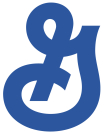

Target’s reclosable canister for its Archer Farms brand is shaking up the RTE cereal market, which has been firmly entrenched in bag-in-box for decades. Target touts the foil-sealed package as a “bag-free container.” The easy-flow spout with snap-shut reclosable lid controls dispensing and helps maintain freshness. Introduced in April 2008, the oblong-shaped paperboard canister measures 10 inches tall by 2.5 inches deep for convenient storage in consumers’ pantries. Available in 18 flavors priced from $3.49 to $3.99, the canister holds from 10.5 to 25.75 ounces of product, depending on the variety.

1. Kellogg Co.
The U.S. cereal leader continues its focus on innovation, spending $40 million on an addition to its R&D facility and introducing a host of new products. Last month, Kellogg expanded its line of Grab’n Go cereal packs with a third variety, Frosted Flakes. Grab’n Go Corn Pops and Fruit Loops launched in January. Laser-scored, easy-open pouches contain 70, 80 or 90 calories of cereal, depending on the variety.
2. General Mills Inc.
Despite higher prices for grain and other raw materials, General Mills saw a 2% sales increase in 2007 for its Big G cereals (now all whole-grain). The Cheerios franchise alone accounted for 12% of ready-to-eat cereal category sales in fiscal 2007, making it the best-selling cereal brand in the U.S. New flavors, as well as new packs, keep Cheerios fresh with consumers. For example, introduced in early 2007, the Tot Pack canister features a flip-top aperture for pouring and a teardrop-shaped one for one-at-a-time dispensing to facilitate use as “finger food” for toddlers.
